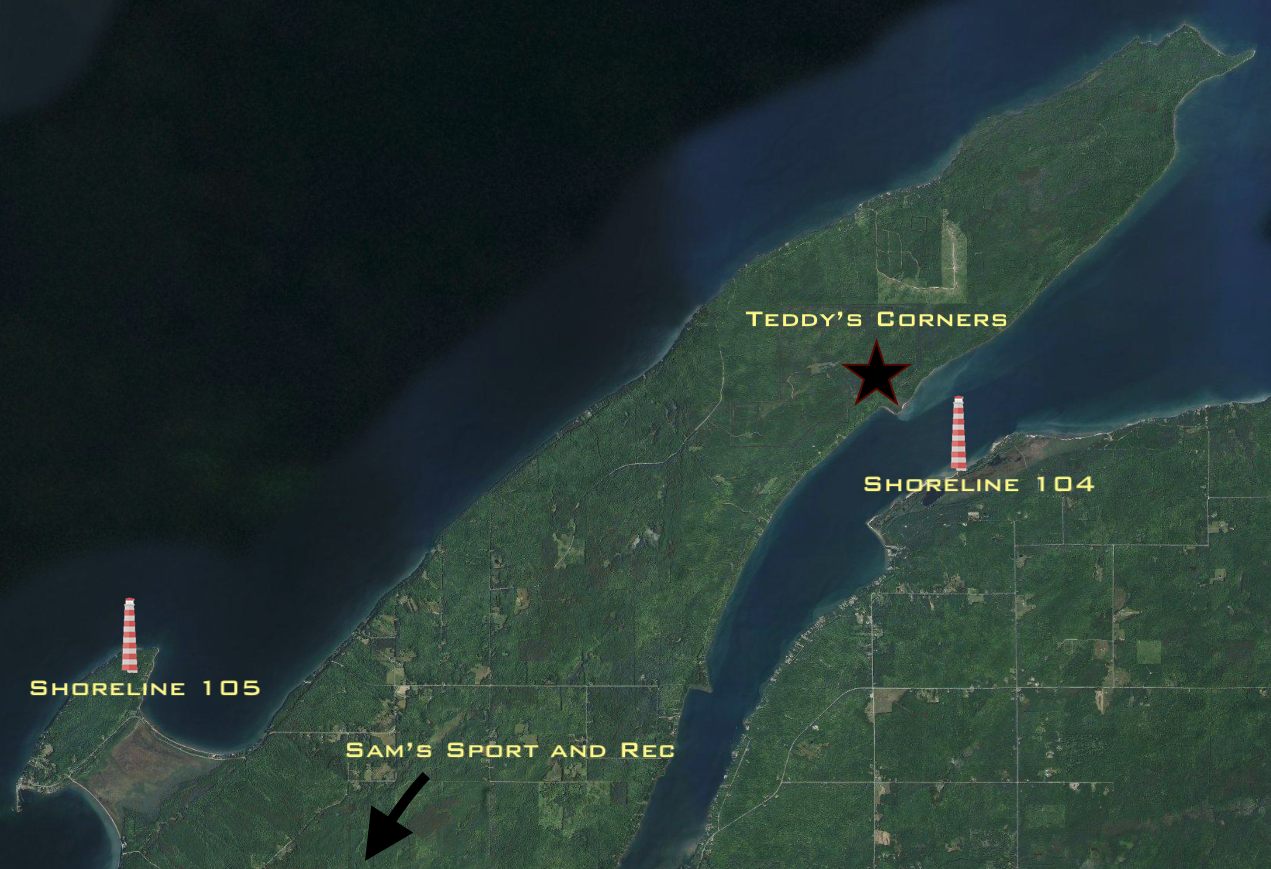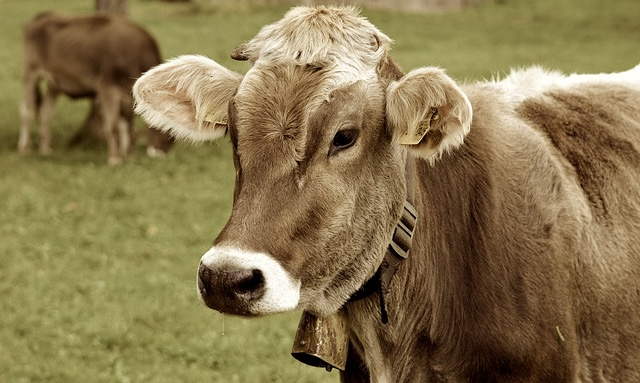Teddy's Corners
One of the popular activities is to canoe/kayak from Sam’s Sport and Rec north around the bend to the cliff across from Shoreline 104. Sam even provides a package deal with a lunch.
People can secure their boats and climb the .75 mile trail to the overlook. It’s a nice view. And it’s a full day’s round trip, which you end happily with dinner or wine tasting at Kathy’s Wine Shoppe.


The cliff is the edge of the old farm of the Bowlin family. They came to the area in the 1850s from Ireland. The farm was typical of the period: cows, sheep, a few goats and 20 acres of legumes. The family exploded with kids and grandkids. All of whom married and spread out around, growing the population. The main farm area got its name from the third generation son Theodore Bowlin. He became the grand patriarch of the clan and by hook and crook, a one-term mayor of Herrington. He helped established a permanent post office, a solid volunteer fire department and traveling library. Some of the locals refer to Highway T as “Teddy’s Road”.
Unfortunately even in Teddy’s time, his farm was on the semi-decline. The children were less enamored of farming, many leaving for Herrington proper. Or to Okaso or even further west to Evansville where factory jobs are plenty.
Winter 1962-63
In the fall of 1962, the state government decided to try to cut down on the number of insects and insect-related diseases by spraying with DDT (https://en.wikipedia.org/wiki/DDT). The application was used widely along the both sides, adjacent to Teddy’s Corners and Shoreline 104. The spraying did get the desired effect. Bugs basically vanished overnight.
There were also very bad consequences. The chemical drifted into the water killing fish and any animals eating the dead fish. It’s not know how much damage was done. The fisheries in Okaso were forced to turn to more northern routes to avoid the contamination. The devastation of using DDT was far and wide. During that winter, a lot of wildlife died off.
January of ’63 is the time of the strange events at Teddy’s Corners.

One night, past midnight, the Bowlin family was woken by a loud crash near the barn. Fearing coyotes or maybe even a fire breaking out, they dashed into the cold to determine what happened. They discovered the fence surrounding the cow holding pen broken, a section smashed aside. The cows were pressed against the barn, in a terrified state wanting to get inside. On the ground was a long smear of blood that stretched from the pen into the darkness.
Teddy and his family did his best to make snap repair and get his herd indoors. Counting the cows, they came up one short. In the morning, he followed the blood trail east. It abruptly ended at the cliff’s edge. And yes, it’s the same spot people picnic at nowadays.
Thinking this was a one-time event, the Bowlins went about their business. And in the face of this mystery, they housed the cows during the night, allowing them to roam for only a few hours after the evening milking. Teddy was certain whatever happened was over but he was cautious about it.
Four nights later was an even bigger commotion in the barn. The family scrambled with hunting rifles and flashlights to protect their own. This time, the barn’s wall was collapsed inward, the wood beams snapped like twigs. Again, a cow was missing and blood soaked the snow off towards the cliff. Giving chase, Teddy came to the water’s edge finding nothing. The family dogs, excellent hunters, found no scents. In anger, swearing and cursing, Teddy fired several rounds into the water.
The next day, he patrolled the eastern coast, going up and down along it. He contacted neighbors, none of whom heard anything or had similar experiences. The blood trail extended only from his farm to the cliff. There were no others, and that worried him. Seeing that his farm was closest to the water’s edge, he figured his animals were the easiest target.
Frustrated, Teddy decided to stand guard at night. He slept during the afternoon and after the late milking. Rising when his wife went to bed, he dressed for the cold nights and had two hunting rifles with him. He did this for a week, almost calming enough to figure the attacks (as he called them) might be over. Even his family began to think he was worked up over nothing.
And then, according to reports, his family was woken shortly after 2 AM by the sound of shots being fired. They rushed to where he was keeping post. His favorite hunting rifle was left on the ground, covered in a slick greenish-black liquid. The other rifle was unused. The flashlight he carried was a few feet away, as if thrown. The dogs were cowering near the barn unwilling to budge.
Like before, there was a red trail in the snow, following the same path. Far less blood but in many ways more horrifying. Teddy’s glove and hat were found along it. Later, the sheriff discovered his wrist watch surrounded by bone fragments and blood which matched Teddy’s type. Scratches on the watch face seemed as if it was partially chewed and spit out.
Needless to say, Teddy was never seen again. Devastated by these events, his family decided to move and his farm was auctioned off. No other “attacks” were recorded but a stigma hung over the property. It traded hands several times but people never lasted long. In 1995 the land was reclaimed by the state wild-land program. Animal populations are back to normal after the DDT spraying stopped.
You can still find the barn if you walk west from the cliff.
The trail is easy to find, as nothing grows on it.
